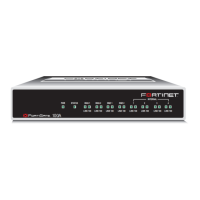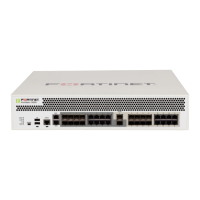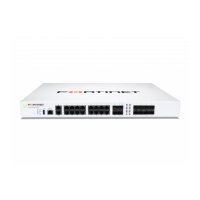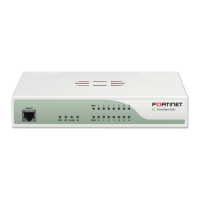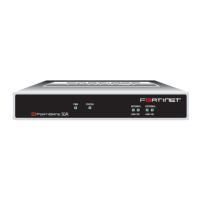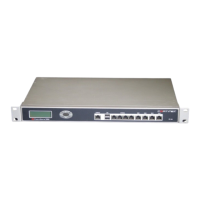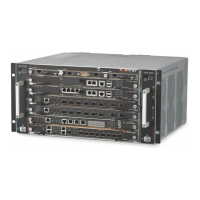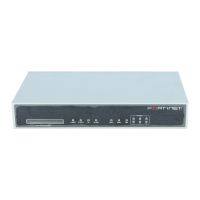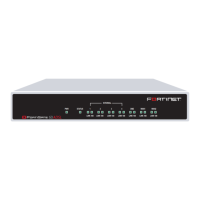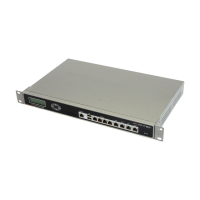216 01-28006-0003-20041105 Fortinet Inc.
Configuring virtual IPs Firewall
Virtual IP has the following options.
Configuring virtual IPs
To add a static NAT virtual IP
1 Go to Firewall > Virtual IP.
2 Select Create New.
3 Enter a name for the virtual IP.
4 Select the virtual IP External Interface from the list.
The external interface is connected to the source network and receives the packets to
be forwarded to the destination network. You can select any firewall interface or a
VLAN subinterface. You can set the virtual IP external interface to any FortiGate
interface. Table 22 on page 217 contains example virtual IP external interface settings
and describes the policies to which you can add the resulting virtual IP.
5 Select Static NAT.
6 Enter the External IP Address that you want to map to an address on the destination
network.
For example, if the virtual IP provides access from the Internet to a web server on a
destination network, the external IP address must be a static IP address obtained
from your ISP for your web server. This address must be a unique address that is not
used by another host and cannot be the same as the IP address of the external
interface selected in step 4. However, the external IP address must be routed to the
selected interface. The virtual IP address and the external IP address can be on
different subnets.
7 Enter the Map to IP address to which to map the external IP address. For example,
the IP address of a web server on an internal network.
8 Select OK.
Name Enter the name to identify the virtual IP. Addresses, address groups, and
virtual IPs must all have unique names to avoid confusion in firewall
policies.
External Interface Select the virtual IP external interface from the list.
Type Select Static NAT or Port Forwarding.
External IP
Address
Enter the external IP address that you want to map to an address on the
destination network. To configure dynamic port forwarding, set the external
IP address to 0.0.0.0.
External Service
Port
Enter the external service port number that you want to configure port
forwarding for. (Port forwarding only.)
Map to IP Enter the real IP address on the destination network.
Map to Port Enter the port number to be added to packets when they are forwarded.
(Port forwarding only.)
Protocol Select the protocol (TCP or UDP) that you want the forwarded packets to
use. (Port forwarding only.)
Note: The firewall translates the source address of outbound packets from the host with the
Map to IP address to the virtual IP External IP Address, instead of the firewall external address.

